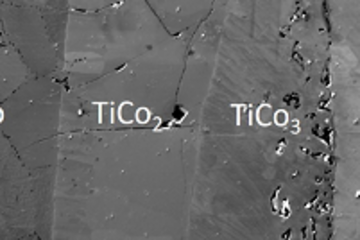All genres
681.
Talk
Interplay between Plasticity Mechanisms, Entropy, and Chemical Composition: An Ab initio approach. Plasticity 2014, Freeport, Bahamas (2014)
682.
Talk
Materials design and discovery on the computer: Prospects and challenges. ICYS workshop, Tsukuba, Japan (2014)
683.
Talk
Ab initio thermodynamics: A novel route to understand and design structural materials. NIMS, Tsukuba, Japan (2014)
684.
Talk
Materials design based on predictive ab initio thermodynamics. Colloquium at Universität Magdeburg, Magdeburg, Germany (2014)
685.
Talk
A brief introduction to surface science from a modelers perspective. Seminar at Ecole Polytechnique, Paris, France (2014)
686.
Talk
Pourbaix diagrams and stability in electrochemical environment. Catalysis Workshop Reisensburg, Reisensburg, Germany (2014)
687.
Talk
Connecting thermodynamic concepts of semiconductor defect chemistry with electrochemistry. Calphad Conference, Changsha, China (2014)
688.
Talk
Understanding hydrogen embrittlement by a combined atomistic-analytic multiscale approach. MDRC Conference , Lake Arrowhead, CA, USA (2014)
689.
Talk
Discrete Models – Material Properties from Electrons and Atoms. ICMEg Conference, Rolduc, The Netherlands (2014)
690.
Talk
First principles calculations of CCA stability. Workshop CC Alloys , München, Germany (2014)
691.
Talk
Ab initio thermodynamics: A novel route to understand and design structural materials. CSW Conference, Tsukuba, Japan (2014)
692.
Talk
Materials design and discovery on the computer: Prospects and challenges. IUMRS-ICA2014, Fukuoka, Japan (2014)
693.
Talk
Materials design based on predictive ab initio thermodynamics. CMD25 JMC , Paris, France (2014)
694.
Talk
Modeling Ductility at the Atomistic Scale: Status and Challenges. MSE 2014, Darmstadt, Germany (2014)
695.
Talk
The role of hydrogen-hydrogen interaction in understanding H embrittlement: An ab initio guided multiscale approach. Hydrogen Conference, London, UK (2014)
696.
Talk
Design of structural materials based on ab initio computed phase stabilities. MS&T Conference, Orlando, FL, USA (2014)
697.
Talk
Ab initio based design of structural materials: Status and challenges. Expertenpanel Computer Simulation of Material Structures and Properties, Schott AG , Mainz, Germany (2014)
698.
Talk
Identifying H induced failure mechanisms in structural materials: A multiscale approach. MRS Fall Meeting, Boston, MA, USA (2014)
699.
Talk
An ab-initio study of muscovite mica. DPG Frühjahrstagung, Dresden, Germany (2014)
700.
Talk
Adaptive behavior in the Fe–C system. Pearlite workshop, MPIE, Düsseldorf, Germany (2014)











